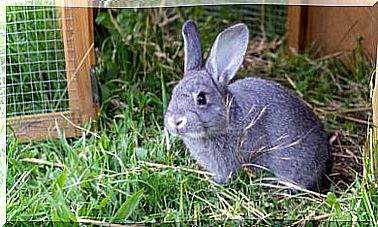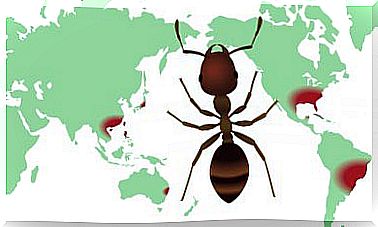Plains Zebra: Characteristics And Habitat
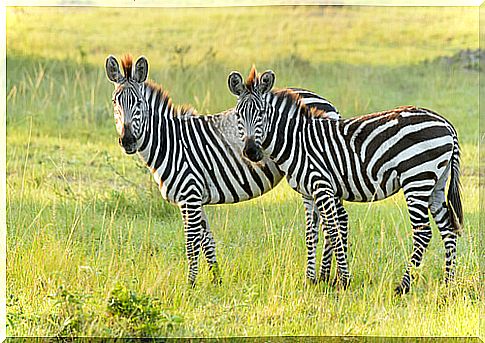
The plains zebra is native to the African plains. It belongs to the genus Equus , within which are both zebras and horses.
Zebras belong to the Equus quagga species and horses to the Equus caballus species . Currently, there are three different species of zebras: Equus quagga is the most common and widespread variety.
Characteristics of the plains zebra
Zebras are herbivorous mammals whose diet focuses on the consumption of vegetables, such as grass, shoots, shrubs, leaves, bark and fruit. This type of diet allows them to purge the stomach. In relation to its physiology, it has a wide body with short legs, medium size and a weight that ranges between 350 and 380 kilos.
The uniqueness of the zebra resides essentially in the black and white stripes that cover its body. All zebra subspecies have these vertical stripes on the front of the body. As you move towards the back of the body, they become horizontal. The northern populations have narrower and more defined bands. However, southern populations have fewer stripes on their back.
Zebras are social animals that live in small groups and protect each other. If an individual in the pack is attacked, the family comes to their aid. They form a circle around the attacked individual and try to scare off predators.
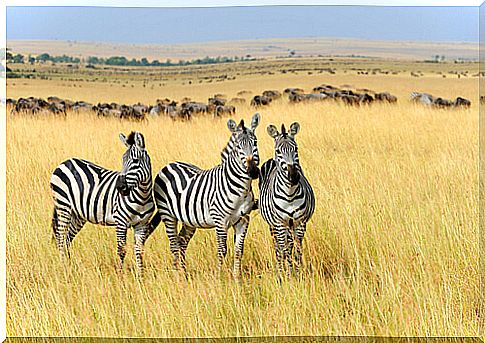
Habitat of the plains zebra
Plains zebras live on the African continent, in different types of habitats: African savanna, scrublands, and grasslands. They are located from sea level to 4,300 meters – for example, on Mount Kenya – in Kenya. However, they are not found in rain forests, deserts, or dune forests.
Zebras live in groups, in which there is a stallion, several females and their young. Although each group lives in specific areas, they meet at certain times of the year. When they come together, they move together like herds.
Their home varies throughout the seasons, as they depend on seasonal changes in vegetation. The size of the area in which they live varies according to the location in which they are. And they are different from the zones of those groups that live in national parks.
In some areas, herds are separated by natural barriers or marginal habitats: they form sub-populations that cover different areas. The area they cover is greater in the dry season, due to the lesser availability of resources in the environment.
Migration
In the ecology of zebras, the migratory process stands out. Zebras have been observed to migrate throughout the year, coinciding with the different seasons. It begins in the rainy season and the daily displacement depends on the rate of precipitation, among other factors.
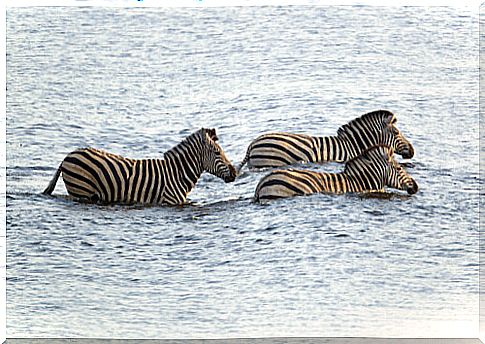
The objective of this migration is the search for resources. One of the most striking migrations occurs in the Serengeti. However, not all zebra herds migrate. Some herds or groups of zebras react differently to changing weather conditions.
In addition, zebras can modify their migration patterns to adapt to possible adverse situations or to the need to find new resources. However, the presence of fences on the roads limits the radius of expansion of the populations.
Threats
Among the threats that zebras face, the following stand out:
- Agriculture and aquaculture.
- Cattle raising.
- Use of biological resources, such as capturing land animals.
- Human disturbances and intrusions, such as wars, civil disturbances, and military practices.
- Climate change, which together with a severe climate, leads to droughts.
- Hunting. Zebra skin is one of the main attractions of hunters.
There is an important trade in African animal skins, which inexorably leads to the disappearance of the species. A clear example is the subspecies cuagga, which disappeared in the 19th century due to human action. It was the first subspecies of zebra described and was characterized by the fact that the back of its body lacked stripes; it was a brown hue.
Unfortunately, today stocks are declining and the position of zebras on the Red List of the International Union for Conservation of Nature (IUCN) is near threatened ( near threatened ).




